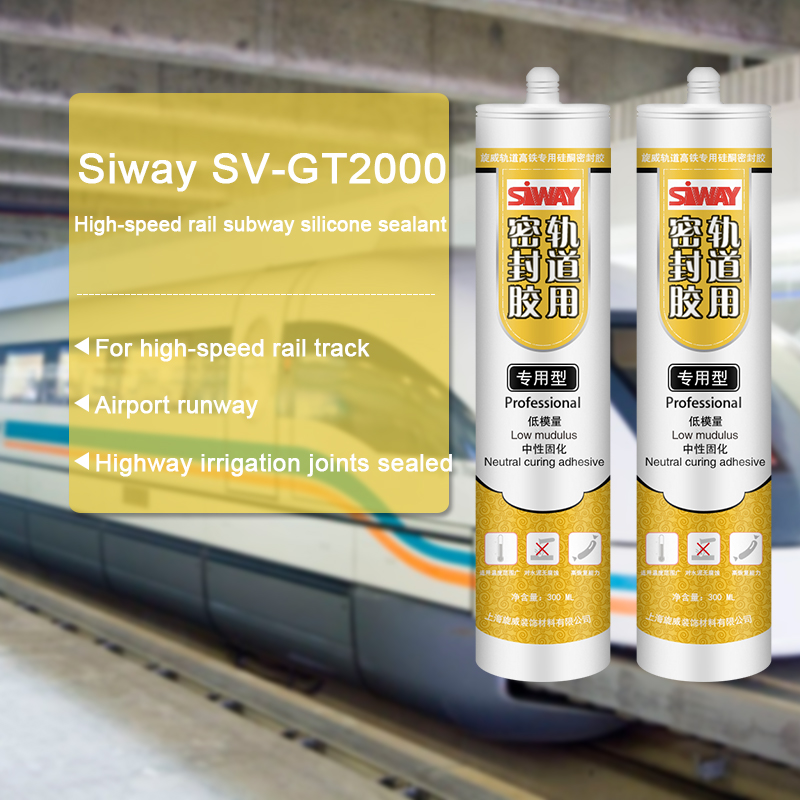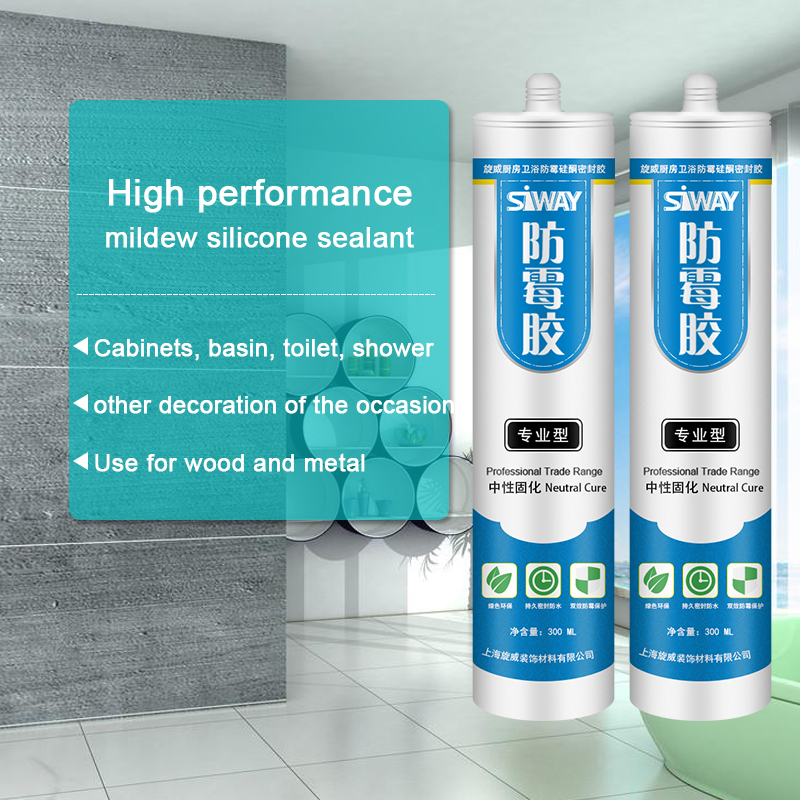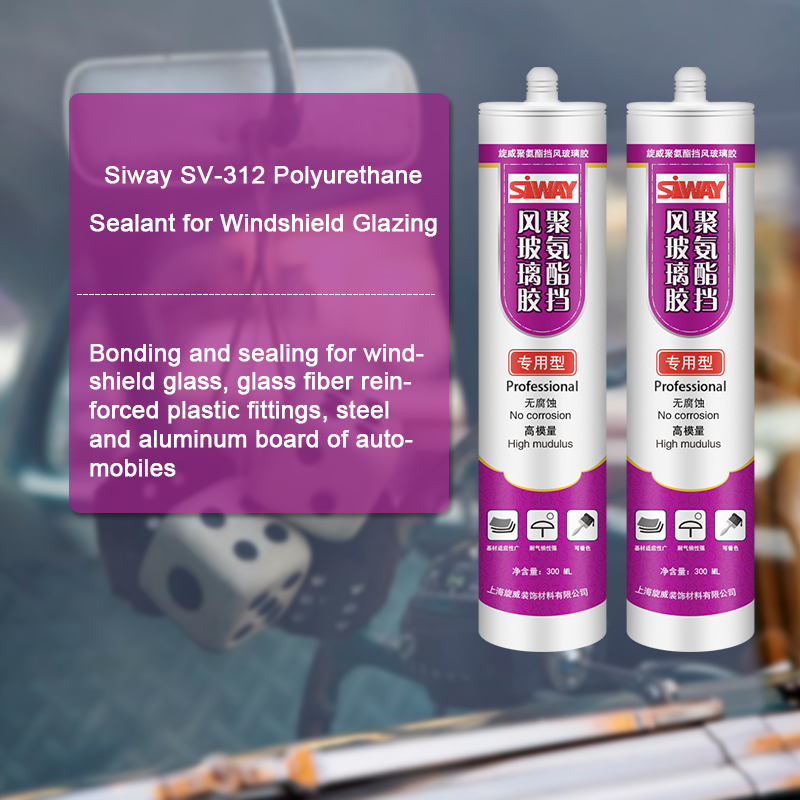15 Years Factory SV-GT2000 High-speed rail subway silicone sealant to Ireland Factory
Short Description:
Description SV-GT2000 High-speed rail subway silicone sealant is a one-component, low modulus, neutral curing adhesive. For most of the stone, ceramic and cement components, can produce excellent adhesion Key Features (1) easy to use: can be used at any time out; (2) excellent thixotropy and extrusion, at any temperature (-40 ℃ to 100 ℃) can be extruded; (3) good adhesion, the stone, ceramics and cement components and other building materials with excellent adhesion properties; no poll...
The company upholds the philosophy of "Be No.1 in quality, be rooted on credit and trustworthiness for growth", will continue to serve old and new customers from home and overseas whole-heatedly for 15 Years Factory SV-GT2000 High-speed rail subway silicone sealant to Ireland Factory, We welcome new and old customers from all walks of life to contact us for future business relationships and achieving mutual success!
Description
SV-GT2000 High-speed rail subway silicone sealant is a one-component, low modulus, neutral curing adhesive. For most of the stone, ceramic and cement components, can produce excellent adhesion
Key Features
(1) easy to use: can be used at any time out;
(2) excellent thixotropy and extrusion, at any temperature (-40 ℃ to 100 ℃) can be extruded;
(3) good adhesion, the stone, ceramics and cement components and other building materials with excellent adhesion properties; no pollution of the porous material;
(4) excellent weather resistance, aging performance, excellent tensile and compression resilience, can carry ± 30% displacement capacity;
(5) neutral curing, stone, cement and other building materials without corrosive, to overcome the shortcomings of acid corrosion material.
(6) base modulus: passive deformation occurs when the role of moderate stress on the concrete substrate to ensure that the concrete surface is not destroyed;
(7) high elasticity high recovery capacity: can be repeated from the seams with the movement, fast response fast response, permanent deformation of small.
Basic Application
1.For high-speed rail track, airport runway, highway irrigation joints sealed, can withstand large displacement;
2.Can also be used for other concrete pavement sealing, subway engineering, tunnels, bridges and other projects sealed.
Technical data sheet
|
Test project |
Unit | value | ||
| surface drying time(25℃,50%R.H.) | min | ≤60 | ||
| Sagging(70℃) | vertical | mm | ≤3 | |
| Horizontal | mm | 0 | ||
| Mass loss rate | / | ≤5% | ||
| Elastic recovery rate | / | ≥80% | ||
| 100% tensile strength | 23℃ | MPa | ≤0.3 | |
| -20℃ | MPa | ≤0.3 | ||
| tensile strength | 23℃ | MPa | ≥1.0 | |
| -20℃ | MPa | ≤2.0 | ||
| 168 h after thermal aging (80 ℃) | MPa | ≥0.8 | ||
| 168 h after alkali treatment | MPa | ≥0.8 | ||
| Breaking elongation | 23℃ | / | ≥800% | |
| -20℃ | / | ≥600% | ||
| 168 h after thermal aging (80 ℃) | / | ≥600% | ||
| 168 h after alkali treatment | / | ≥600% | ||
| Bond strength | 23℃ | / | No damaging | |
| -20℃ | / | No damaging | ||
| 168 h after thermal aging (80 ℃) | / | No damaging | ||
| 96 h after immersion | / | No damaging | ||
Color
Black, White, Gray
Package
300ml in cartridge * 24 per box, 590ml in sausage *20 per box
Shelf life
12 months
Note
If you want the TDS or MSDS or other details, please contact with our sales person.
https://www.stuccoplastering.com/tools/
Howdy folks, The Amazon link above is your personal link to purchase any of the tools we use for all of our how-to teaching guide video’s, we demonstrate and explain in detail so that you may get a greater understanding of the stucco/plastering application,
if you’re interested in the trowels and tools we use please click on our Amazon account above:
live long and Plaster
Once you’re on the link or page I show the most common tools but you can scroll along and find other tools you’re looking for too in the same link. Remember we teach you how to repair your #1 investment, “Your home,” so save the dough and DIY with the tools we show on our link.
Plus this supports us too so we can keep making these teaching videos’
All from kirk giordano your favorite Stucco nerd and plaster geek guy.
Subscribe for more stucco content:
https://www.youtube.com/subscription_center?add_user=StuccoPlastering
Kirk Giordano Plastering Inc.
https://www.StuccoPlastering.com
https://www.BayAreaPlastering.com
Connect with us!
https://www.facebook.com/kirk.giordanoplastering
https://plus.google.com/+StuccoPlastering
https://twitter.com/GiordanoStucco
https://www.youtube.com/StuccoPlastering
https://www.linkedin.com/in/kirk-giordanoplastering-1b40551b/
https://www.pinterest.com/kirkgiordano/
https://vk.com/kirkgiordanoplastering
https://www.instagram.com/kirkgiordanoplastering
plaster, it’s everywhere you want to be
Hello everyone, in this video I show another way of repairing or fixing a large structural crack with polyurethane caulking in a stucco wall.
The crack shown here is structural, meaning it will always move.
I feel it’s best to use a flexible material under the circumstances. There are about 20 different ways to repair the crack properly.
The best way tearing off all the stucco and re-doing the complete wall.
But I get beat up if I suggest this to most customers.
Again, I will say there are many ways to fix a structural crack.
I am implying to just fill it with stucco is the easiest, but far from the best as when a structural crack moves again and it will, as it’s structural in the first place, the stucco will simply crack with it.
(for me structural means when it rains plus a bunch more reason, the area or wall will lift then when dryer conditions occur, settle, thus structural)
If a polyurethane caulking if used first and the texture can’t be matched with that caulking a person cam apply a stucco with sand to match a texture using stucco on top of all this caulking,
Is a bonding agent necessary?
Depends,
If the caulking is allowed to set and or dry, yes a bonding agent would now be necessary to adhere the new stucco to this area,
if added while the caulking is still curing is a bit tricky as can it affect the integrity of the caulking?
Good question, yes.
But for a temporary fix, say 15 years, it is an intelligent alternative for keeping the rain water out to the alternative of tearing the wall apart and trying to locate why the walls is moving and or separating.
Other popular plastering videos tips below




